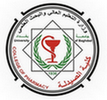The Faculty of Pharmacy discussed the Master’s Degree thesis, “Cost-effectiveness analysis of Infliximab reference (Remicade) and its biosimilar (Remsima) in patients with Ankylosing Spondylitis and Rheumatoid Arthritis “by Hasan Raid Fadhil and the supervisors: Dr. Ali Azeez Al-Jumaili and Prof. Dr. Nizar Abdulateef Jasim. Rheumatoid arthritis (RA) and ankylosing spondylitis (AS) are chronic inflammatory diseases that significantly impact the patient’s quality of life and their ability to function physically. Biological medicines such as infliximab and its biosimilars are effective treatments for active ankylosing spondylitis and rheumatoid arthritis with high disease activity.Objectives: The objective was to conduct a pharmacoeconomic study comparing the cost-effectiveness of the reference infliximab (Remicade) with its biosimilar (Remsima) in patients with rheumatoid arthritis or ankylosing spondylitis visiting public hospitals from the payer’s point of view.Methods: This is a pharmacoeconomic study performed at two large teaching governmental hospitals in Baghdad, Iraq, which supplied infliximab to outpatients with rheumatoid arthritis and ankylosing spondylitis. The outcome measures were obtained from patients’ medical records (clinical effectiveness) and face-to-face interviews (quality of life) with the patients from December 2021 through April 2022.The patients with RA were followed for at least 14 weeks, and the patients with AS were followed for at least 12 weeks (mostly) retrospectively (received at least 3 doses). The clinical disease activity index (CDAI) for RA and the Bath Ankylosing Spondylitis Disease Activity Index (BASDAI) for AS were used by rheumatologists to measure infliximab effectiveness. The quality of life (QoL) of all patients was measured by the researcher using the validated Arabic version of the 5-level EQ-5D (EQ-5D-5L) from the EuroQol Research Foundation. Results: The study recruited 119 patients in total. Fifty-seven patients had rheumatoid arthritis receiving infliximab: 27 received Remicade and 30 received Remsima. The study also included 62 patients with ankylosing spondylitis who received infliximab (31 received Remicade, and 31 received Remsima).For RA, the mean age is 49.6 years, and the BMI of 30.0. The vast majority of participants were women (82.5%), with a low level of formal education (65%). Overall, both infliximab biopharmaceuticals had good effectiveness in reducing rheumatoid arthritis disease activity (CDAI) and improving patient quality of life. They both had comparable adverse drug reactions (ADRs). For the AS, the mean age is 37.85 years, with 83.9% being men. In general, both reference infliximab and its biosimilar were successful in lowering AS disease activity (BASDAI) and increasing the QoL of patients with AS. Both treatment groups experienced comparable ADRs. Their importation costs were different from 2019 to 2021. According to 2019 pricing, the incremental cost-effectiveness ratio (ICER) of Remicade versus Remsima was $40,909/quality-adjusted life year (QALY) and $37,241 per QALY for AS and RA patients, respectively. Conclusions: Remicade was slightly more effective and provide a better QoL, but in 2019 was costlier for both RA and AS patients compared to Remsima. Because the MOH has no specific budget allocation per QALY, it was unclear which biopharmaceuticals were cost-effective in 2019. However, Remicade was more cost-effective compared to Remsima in both diseases in 2021 because Remicade was dominant (less expensive and slightly more effective). Approving, registering, and procuring both reference infliximab and its biosimilar by the MOH was a good idea to keep the competition in price and maintain infliximab availability for RA and AS patients.


